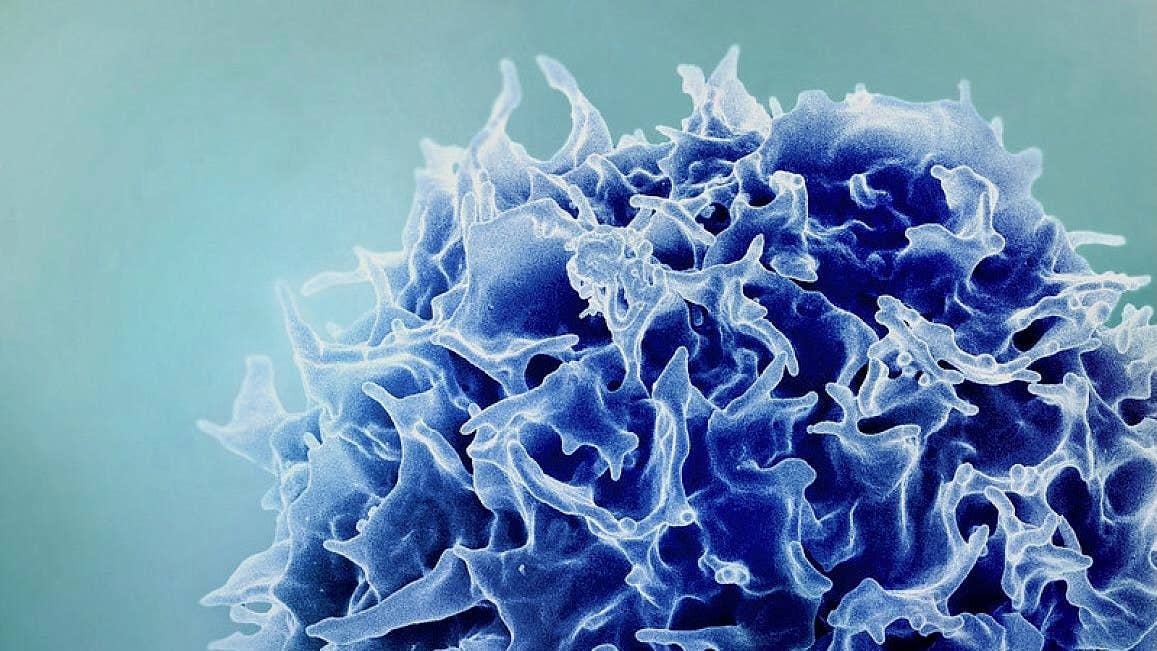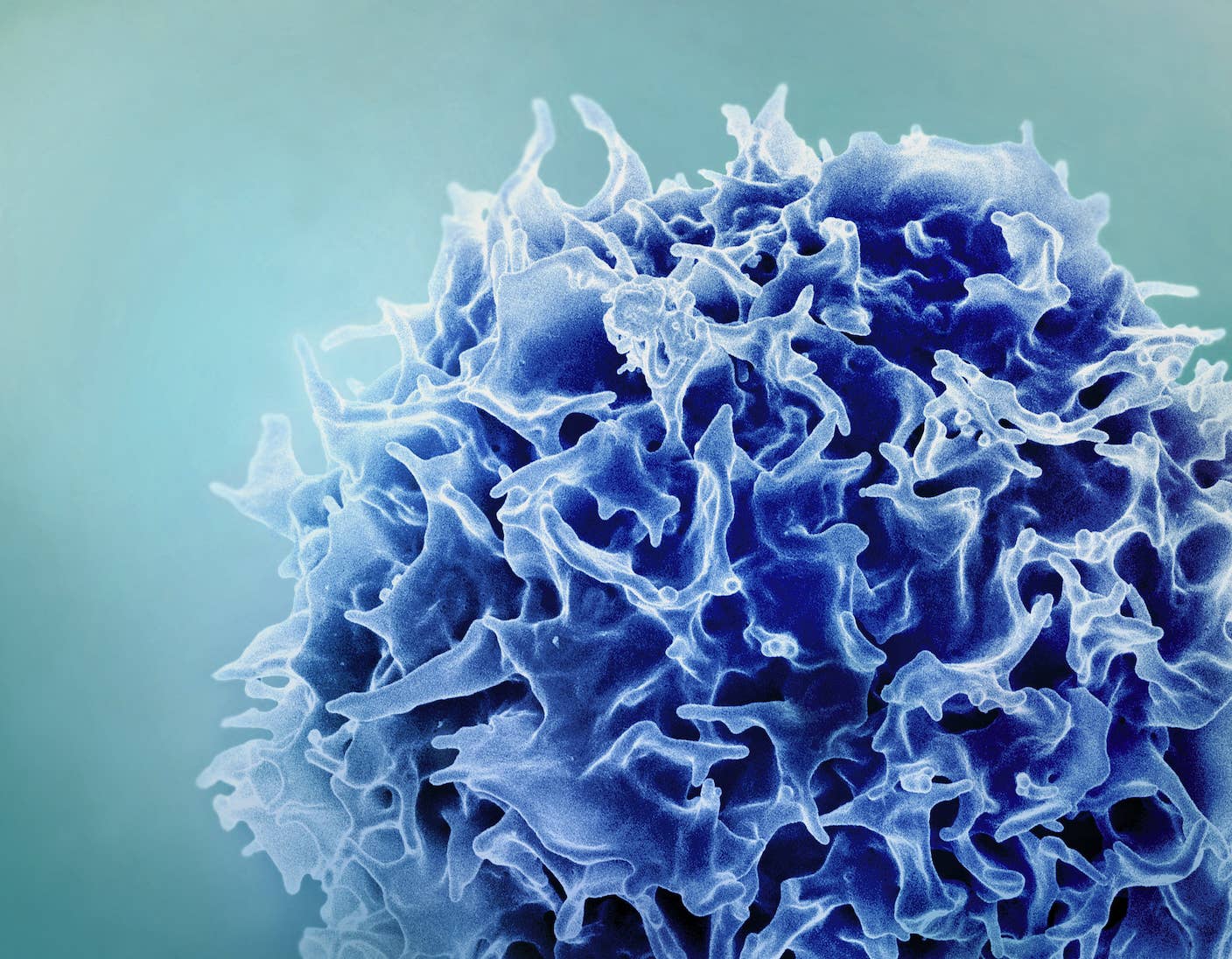Cell Therapy Takes Aim at Deadly Brain Tumors in Two Clinical Trials

Share
When my uncle was diagnosed with glioblastoma, I knew he was on borrowed time.
The deadliest form of brain cancer, it rapidly spreads through the brain with limited treatment options. Rounds of chemotherapy temporarily kept the aggressive tumors at bay. But they also wrecked his mind and immune system. He held on for 13 months—longer than the average survival timeline of most patients after diagnosis.
His story is just one of tens of thousands in the US alone. Despite decades spent looking for a therapy, glioblastoma remains a terrible, untreatable foe.
But hope may come from within. This month, two studies genetically engineered the body’s own immune cells to hunt down and wipe out glioblastoma brain tumors.
Therapies using these CAR (chimeric antigen receptor) T cells have been revolutionary in tackling previously untreatable blood cancers, such as leukemia. Since 2017, six CAR T-based therapies have been approved by the US Food and Drug Administration for multiple types of blood cancers. Rather than a last resort, they have now entered the therapeutic mainstream.
But CAR T therapies have always struggled to battle solid tumors. Glioblastomas are an even harder challenge. The cancerous cells form connections with neurons, rewiring neural networks to progressively change how the brain functions and eventually robbing it of cognitive function. This also makes it nearly impossible to surgically remove the tumors without harming the brain.
The new clinical trials offer a glimmer of hope that the therapy could slow the disease down.
One, led by Dr. Bryan Choi at Massachusetts General Hospital, found a single infusion of CAR T cells shrank the tumors in three people with recurrent glioblastoma. Another from the University of Pennsylvania Perelman School of Medicine used a different CAR T formulation to similarly reduce the size of brain tumors in six participants.
Though promising, the treatment wasn’t a cure. The tumors reoccurred in several people after six months. However, one man remained cancer-free beyond that point.
To be clear, these are only interim results from a small handful of participants. Both studies are still actively recruiting to further assess their results.
But to Choi, it’s a step toward expanding CAR T therapies beyond blood cancers. “It lends credence to the potential power of CAR T cells to make a difference in solid tumors, especially the brain,” he told Nature.
Power of Two
Cancer cells are sneaky. Our body’s immune system is constantly scouting for them, but the cells rapidly mutate to escape surveillance.
T cells are one of the main immune cell types keeping an eye out for cancer. In the past decade, scientists have given them an artificial boost with genetic engineering. These gene-edited T cells, used in CAR T therapies, can better hunt down cancerous blood cells.
Here’s how it usually works.
Physicians isolate a person’s T cells and genetically add extra protein “hooks” on their surfaces to help them better locate cancer cells. Like all cells, cancerous ones have many protein “beacons” dotted along their exteriors, some specific to each cancer. In CAR T therapy the new hooks are designed to easily grab onto those proteins, or antigens. After re-infusing the boosted cells back into the body, they can now more effectively seek and destroy cancerous cells.
While the strategy has been game-changing for blood cancers, it has faltered for solid tumors—such as those that grow in organs like the breasts, lungs, or brain. One challenge is finding the right antigens. Unlike leukemia, solid tumors are often made up of a mix of cells, each with a different antigen fingerprint. Reprogramming T cells to target just one antigen often means they miss other cancerous cells, lowering the efficacy of the treatment.
“The challenge with GBM [glioblastoma] and other solid tumors is tumor heterogeneity, meaning not all cells within a GBM tumor are the same or have the same antigen that a CAR T cell is engineered to attack,” Dr. Stephen Bagley, who led the University of Pennsylvania clinical trial, said in a press release. “Every person’s GBM is unique to them, so a treatment that works for one patient might not be as effective for another.”
Be Part of the Future
Sign up to receive top stories about groundbreaking technologies and visionary thinkers from SingularityHub.


So, why not add an extra “hook” to CAR T cells?
Tag-Team Triumph
Both of the new studies used the dual-target method.
Choi’s team zeroed in on a protein called epidermal growth factor receptor (EGFR). The protein is essential to the developing brain but can lead to glioblastoma in its normal and mutated forms. The problem is the protein also occurs in other healthy tissues, such as the skin, lungs, and gut. As a workaround, the team added an “engager” protein to tether T cells to their target.
In three participants, a single infusion directly into the brain decreased the size of their tumors in a few days. The effects were “dramatic and rapid,” wrote the team. The cancer came back in two people. But in one person, a 72-year-old man, the treatment slashed his brain tumor by over 60 percent and lasted more than six months.
The Penn Medicine team also targeted EGFR. In addition, their CAR T cell recipe grabbed onto another protein that’s estimated to mark over 75 percent of glioblastomas. In the 48 hours after a direct infusion into the brain, the tumors shrank in all six participants, with the effects lasting at least two months in some. Aged 33 to 71, each person had at least one relapse of tumor growth before starting the treatment.
“We are energized by these results, and are eager to continue our trial, which will give us a better understanding of how this dual-target CAR T cell therapy affects a wider range of individuals with recurrent GBM [glioblastoma],” lead study author Dr. Donald O’Rourke said in the press release.
The treatment did have side effects. Even at a lower dose, it damaged neurons, a complication that had to be managed with a heavy dose of other medications.
Unlike previous CAR T therapies, which are infused into the bloodstream, both studies require direct injection into the brain. While potentially more effective because the engineered cells have direct contact with their target, brain surgery is never ideal.
Both teams are now dialing in their formulations to reduce side effects and make the therapies last longer. The Penn Medicine team will also map the CAR T cells’ infiltration of brain tumors over time. The dual targeting method could make it more difficult for cancer cells to evolve resistance to the therapy. By better understanding these interactions, it’s possible researchers can build better CAR T formulations for glioblastoma and other solid tumors.
It’s not a home run. But for deadly brain tumors, the studies offer a ray of hope.
Image Credit: NIAID
Dr. Shelly Xuelai Fan is a neuroscientist-turned-science-writer. She's fascinated with research about the brain, AI, longevity, biotech, and especially their intersection. As a digital nomad, she enjoys exploring new cultures, local foods, and the great outdoors.
Related Articles

Single Injection Transforms the Immune System Into a Cancer-Killing Machine

New Gene Drive Stops the Spread of Malaria—Without Killing Any Mosquitoes

New Immune Treatment May Suppress HIV—No Daily Pills Required
What we’re reading